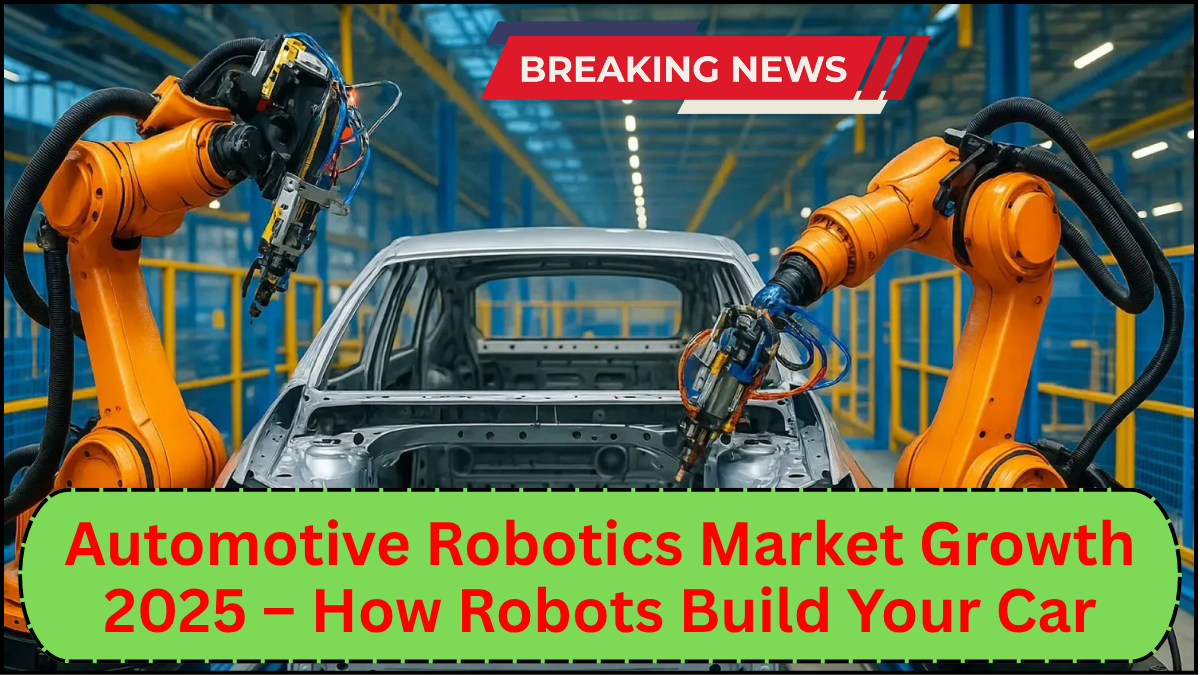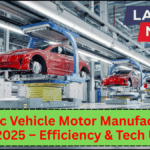The automotive robotics market is evolving rapidly, redefining the way vehicles are manufactured. With the industry poised for robust expansion through 2025, automation is no longer a futuristic concept—it’s the new standard. Robotics has become the backbone of modern car production, from welding chassis components to installing windshields with precision. As the demand for smarter, faster, and more efficient production grows, so too does the role of robotics in the automotive space.

The Surge of Automotive Robotics Market Growth by 2025
Market analysts project that the automotive robotics market growth in 2025 will be driven by several key factors: demand for electric vehicles, the pursuit of zero-defect manufacturing, and the need to cut down production timelines. According to recent industry reports, the global market for automotive robotics is expected to exceed $12 billion by 2025, reflecting both increased adoption and technological advancements.
Leading automakers like Tesla, BMW, and Toyota are investing heavily in robotic systems to stay competitive. This shift is not limited to large manufacturers—Tier 1 and Tier 2 suppliers are also integrating automation into their operations to meet tight production schedules and stringent quality standards.
How Assembly Automation Transforms Car Manufacturing
Assembly automation is central to the automotive robotics ecosystem. In a typical factory, hundreds of robotic arms perform repetitive and high-precision tasks across various stages of vehicle assembly. These include:
-
Spot welding: Robotic arms join metal panels with incredible accuracy, ensuring structural integrity.
-
Painting: Automated paint robots provide consistent coverage and reduce material waste.
-
Part installation: From dashboards to windshields, robots can install components with minimal human intervention.
-
Inspection and quality control: Vision-enabled robots detect defects in real time, reducing rework and recalls.
What makes this transformation critical is the sheer scale of automotive production. A high-volume plant might produce one car every 45 seconds. Such efficiency is only possible through sophisticated assembly automation systems that reduce human error and downtime.
The Evolution of Robotics in Auto Production
Robotics in auto manufacturing isn’t just about speed—it’s about capability. Early robots were confined to fixed, repetitive tasks, but today’s systems are flexible, collaborative, and intelligent.
Modern robotic solutions now feature:
-
AI integration: Robots can learn from past operations to optimize movements and avoid mistakes.
-
Collaborative robots (cobots): Designed to work safely alongside humans, cobots are reshaping workspaces by blending human dexterity with robotic efficiency.
-
Adaptive vision systems: These enable robots to handle complex tasks like identifying and sorting parts, even if they vary slightly in shape or orientation.
For instance, Audi uses AI-powered robotics to perform over 300 quality checks on each vehicle in real time. This level of scrutiny enhances safety and boosts customer satisfaction.
Key Trends Driving Market Momentum
The following trends are set to accelerate the automotive robotics market growth by 2025:
-
Electric Vehicle (EV) Production: EVs require unique manufacturing processes that benefit from robotic flexibility. As EV demand climbs, so does the need for advanced automation.
-
Industry 4.0 Integration: Smart factories leverage IoT and cloud-based systems to synchronize robotics with other production technologies.
-
Global labor shortages: With skilled labor becoming harder to source, robotics helps bridge the workforce gap without compromising productivity.
-
Customization and short production runs: Robotics enables automakers to pivot quickly between models without a massive retooling process.
Challenges and Future Outlook
Despite the momentum, challenges remain. High upfront costs, integration complexities, and the need for skilled maintenance personnel can slow down adoption. However, these barriers are gradually being overcome through modular robotic platforms and user-friendly interfaces.
By 2025, the convergence of AI, machine learning, and robotics will create a new breed of autonomous manufacturing cells capable of running nearly hands-free. The factories of the near future won’t just build cars—they’ll learn how to build better ones over time.
Frequently Asked Questions (FAQs)
Q1: What is driving the growth of the automotive robotics market in 2025?
The primary drivers include increased demand for electric vehicles, pressure to improve production efficiency, advances in AI-driven robotics, and the shift toward smart manufacturing ecosystems.
Q2: How does assembly automation benefit car manufacturers?
Assembly automation improves production speed, ensures consistent quality, reduces human error, and allows for greater scalability in automotive production lines.
Q3: What types of robots are used in auto manufacturing?
Robots used include articulated arms for welding and assembly, gantry robots for material handling, painting robots, and collaborative robots (cobots) that work alongside humans.
Q4: Are robotics replacing human jobs in auto manufacturing?
Not entirely. While robots take over repetitive and dangerous tasks, humans remain essential for programming, maintenance, quality assurance, and tasks requiring judgment or dexterity.
Q5: What’s the future of robotics in the automotive industry?
Expect more AI-powered, adaptable robots that can self-optimize processes, integrate into connected smart factories, and support even higher levels of product customization.
click here to learn more



